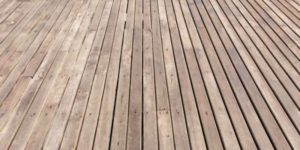Fir wood is best used for flooring and decking due to its high strength and water resistance. It is also popular for creating cohesive and durable structures with minimal maintenance requirements.
Fir wood, known for its strength and durability, is a versatile material commonly used in construction and furniture-making. It is prized for its long grain and water resistance, making it ideal for flooring that can withstand regular foot traffic. Additionally, fir wood’s natural beauty and resistance to moisture damage make it a popular choice for outdoor projects such as decking.
Its stability and ability to maintain appearance with regular sealing and staining set fir wood apart from other options. We will explore the various uses and advantages of fir wood in different applications.
Properties Of Fir Wood
Fir wood is known for its exceptional properties, making it a popular choice for various applications. Understanding the specific qualities of fir wood is essential for determining its suitability for different projects and purposes. Below, we explore the key properties of fir wood that contribute to its versatility and reliability.
Strength And Durability
Fir wood is recognized for its impressive strength and durability, making it an ideal material for structural and load-bearing applications. Its inherent robustness allows it to withstand heavy loads and impacts, ensuring long-term stability and resilience in various environments.
Resistance To Moisture
One of the standout properties of fir wood is its exceptional resistance to moisture. This makes it well-suited for outdoor use, as it can withstand exposure to varying levels of humidity and precipitation without compromising its structural integrity. Additionally, fir wood’s resistance to moisture minimizes the risk of decay and rot, contributing to its longevity and performance in damp conditions.
Common Applications
Construction Materials
Fir wood is extensively used in construction due to its higher strength and long grain, making it ideal for flooring and decking.
Furniture Making
Fir’s water resistance and cohesive appearance without knots make it a popular choice for furniture production.
Advantages Of Fir Wood
Fir wood is commonly used for flooring due to its strength and long grain, making it suitable for areas with regular foot traffic. It is also popular for outdoor projects like decking and cladding, as it performs well even without treatment.
Additionally, firwood is valued for its strength and hardness, although it may be relatively more expensive compared to other types of wood.
Versatility
Fir wood is highly versatile and can be used for a wide range of purposes. Its higher strength and long grain make it an excellent choice for flooring, as it can withstand regular footfall without showing signs of wear. Additionally, fir wood has a cohesive and uniform appearance, free from random knots and curving grains that can disrupt the overall look of a room.
Longevity
Fir wood is known for its durability and longevity. It is a popular choice for outdoor projects, such as cladding, fencing, and decking, due to its ability to perform exceptionally well even without treatment. Douglas Fir, a type of fir wood, is particularly favored for its natural resistance to water and weather elements. With proper woodcare finish, fir wood can maintain its impeccable service and natural good looks for decades.
Strength And Hardness
Firwood exhibits more strength and hardness when compared to other types of solid wood, such as spruce, pine, or hemlock. This makes it a reliable choice for applications that require structural strength, such as manufacturing sashes, doors, windows, and furniture. Its robustness ensures that products made from fir wood can withstand daily use and wear, providing long-lasting performance.
Resistance To Blemishes And Knots
Fir wood is unique in its ability to resist blemishes and knots. Unlike some other woods, fir wood does not easily form knots or develop imperfections. This attribute contributes to its aesthetic appeal, making it a desirable option for those seeking a clean and uniform appearance in their wood products.
Cost-effectiveness
While fir wood may be relatively more expensive compared to some other types of wood, its durability and longevity make it a cost-effective choice in the long run. Investing in fir wood products ensures that they will withstand the test of time, reducing the need for frequent replacements or repairs.
Sustainable Option
Another advantage of fir wood is its sustainability. Fir forests are carefully managed to ensure responsible harvesting practices. When choosing fir wood products, you can feel confident that you are opting for a renewable and environmentally-friendly material.
Conclusion
In conclusion, fir wood offers several advantages that contribute to its popularity and wide range of applications. Its versatility, longevity, strength, resistance to blemishes, and cost-effectiveness make it an excellent choice for various projects. Whether you are looking to enhance the aesthetics of your home or create durable outdoor structures, fir wood is a reliable and sustainable option to consider.
Comparing Fir Wood To Other Types
Fir wood is a strong choice for flooring due to its higher strength and water resistance, making it ideal for regular foot traffic. Additionally, its long, even grain offers a cohesive look without interruptions from knots or irregular grains, making it a popular choice for decking projects as well.
Versus Pine Wood
When it comes to comparing Fir wood to other types, one of the most common comparisons is with Pine wood. Both Fir and Pine belong to the coniferous tree family, but they have some distinct differences.
Versus Oak Wood
Another wood type often compared to Fir is Oak wood, which is known for its strength and durability. Oak is a hardwood, whereas Fir is considered a softwood. The density and grain patterns of Oak wood make it a popular choice for furniture and flooring. However, Fir wood also has its advantages when used in the right applications.
Here is a comparison table that highlights the main differences between Fir wood, Pine wood, and Oak wood:
| Fir Wood | Pine Wood | Oak Wood | |
|---|---|---|---|
| Type | Softwood | Softwood | Hardwood |
| Strength | High | Moderate | Very High |
| Appearance | Minimal knots, relatively uniform grain | More knots, distinctive grain patterns | Distinctive grain patterns, usually darker color |
| Common Uses | Flooring, decking, general millwork | Construction, furniture | Furniture, flooring, cabinets |
In conclusion, while Fir wood may not have the same level of strength as Oak wood, it is still a durable option for various applications. Its high strength, even grain, and water resistance make it suitable for flooring, decking, and general millwork. On the other hand, Pine wood and Oak wood have their own unique characteristics and are often preferred for different purposes.
Best Practices For Using Fir Wood
Outdoor Use Considerations
- Consider using Douglas Fir for outdoor projects due to its natural durability.
- Protect untreated fir wood with woodcare finishes for longevity.
- Utilize fir wood for cladding, fencing, and decking due to its resilience.
Maintenance Tips
- Regularly seal and stain fir wood to maintain appearance and prevent moisture-related damage.
- Avoid knots and blemishes, as fir wood is resistant to these imperfections.
- Opt for fir due to its higher strength and water resistance, ideal for flooring and decking.
Economic Value Of Fir Wood
Fir wood is a valuable resource with a range of applications that contribute significantly to the economy. One of the key aspects of fir wood is its economic value, which is driven by factors such as comparative cost and market demand.
Comparative Cost
When compared to other types of wood like spruce, pine, or hemlock, fir wood stands out for its strength and hardness. While fir wood is relatively more expensive than some of its counterparts, its quality and resilience make it a preferred choice for various applications.
Market Demand
The market demand for fir wood is influenced by its strength, water resistance, and versatility in applications such as flooring and decking. Its excellent performance outdoors, even without treatment, makes it a sought-after material for cladding, fencing, and decking projects.
Environmental Impact
Fir wood is commonly used for flooring due to its high strength and resistance to foot traffic, featuring a cohesive appearance without irregular knots. It’s also popular for outdoor projects like decking and cladding due to its natural water resistance and longevity.
Additionally, it is used for manufacturing sashes, doors, windows, and general millwork.
Sustainability
Fir wood is widely regarded as a sustainable choice for construction and furniture due to its fast growth rate and abundance in forests. This makes it an environmentally responsible alternative to slower-growing and more scarce woods. Fir trees typically reach maturity in 50 to 60 years, which means they can be harvested and replenished more quickly than other types of wood.
Ecological Benefits
The cultivation of fir wood can have positive ecological impacts. Fir trees are known for their ability to absorb carbon dioxide, a greenhouse gas that contributes to climate change. By planting and harvesting fir trees sustainably, we can help mitigate the effects of carbon emissions and promote a healthier environment.
Fir forests also provide habitats for various wildlife species. The dense foliage of fir trees provides shelter and food sources for birds, squirrels, and other small animals. Preserving and responsibly managing these forests helps maintain biodiversity and protects fragile ecosystems.
In addition to its environmental benefits, fir wood offers practical advantages in construction and furniture-making. Its high strength-to-weight ratio makes it a reliable and durable material, capable of withstanding heavy loads and constant use. This makes it a popular choice for flooring, decking, and structural components in buildings.
Fir wood is also naturally resistant to water damage, making it suitable for outdoor applications such as cladding, fencing, and decking. Properly treated, fir wood can withstand exposure to the elements and maintain its strength and appearance for decades.
When it comes to aesthetics, fir wood is prized for its attractive grain patterns, which add a touch of natural beauty to any project. Its light color and smooth texture make it easy to stain, paint, or finish to achieve the desired look.
In conclusion, fir wood is a sustainable and ecologically beneficial choice for construction and furniture. Its fast growth rate, carbon absorption, and wildlife habitat support make it an environmentally responsible option. With its strength, water resistance, and natural beauty, fir wood is versatile and reliable in various applications. By utilizing fir wood, we can create beautiful and functional spaces while minimizing our impact on the environment.

Frequently Asked Questions For What Is Fir Wood Used For
What Are The Disadvantages Of Fir Wood?
Disadvantages of fir wood include: 1. Maintenance: Regular sealing and staining are needed to maintain appearance and protect from moisture damage. 2. Douglas Fir vs. Fraser Fir: Different characteristics may impact choice for specific projects.
What Is Fir Wood Best Used For?
Fir wood is best used for flooring and decking due to its strength, long grain, and water resistance.
Can Fir Wood Be Used Outside?
Yes, fir wood can be used outside. It performs well outdoors even without treatment, but applying a woodcare finish can enhance its durability and appearance. Douglas Fir, also known as Douglas Spruce and Oregon Pine, is commonly used for cladding, fencing, decking, and other outdoor projects.
Is Fir Wood Valuable?
Fir wood is valuable due to its strength, hardness, and lack of blemishes or knots. It is commonly used for flooring and decking due to its ability to handle foot traffic and water resistance. However, it is relatively more expensive compared to other types of wood.
Conclusion
Fir wood’s strength and durability make it perfect for flooring and decking projects. Its resistance to water adds to its appeal for outdoor use. Despite being relatively more expensive, fir wood’s quality and appearance showcase its value in various applications.


